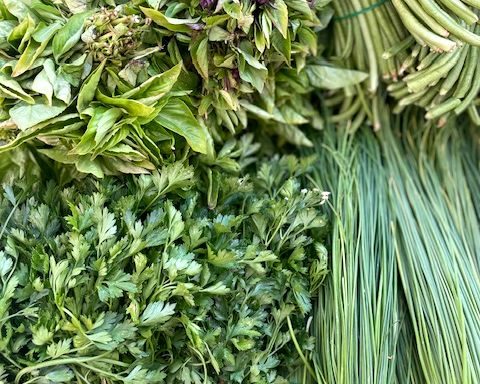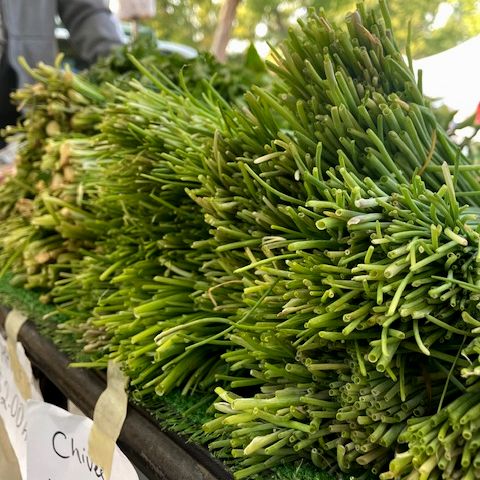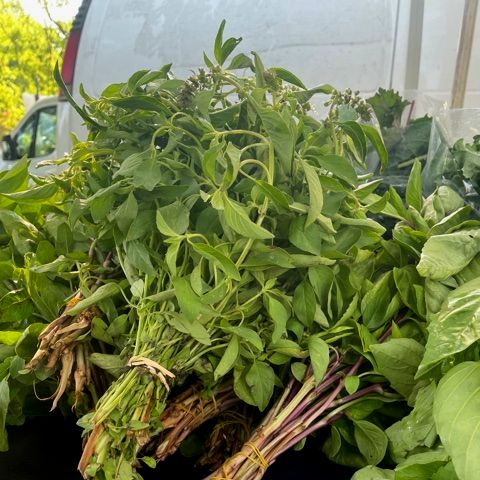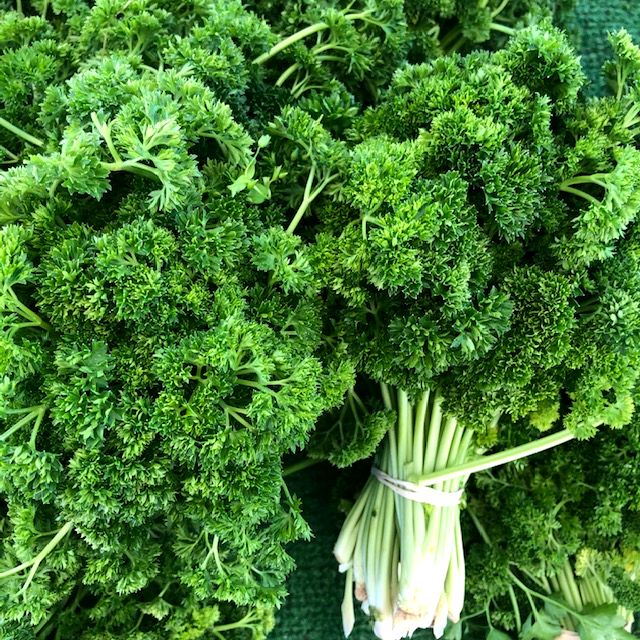Produce Highlight: Fresh Herbs
Nothing adds depth to your recipes like fresh herbs! Fresh herbs can transform a simple meal into something flavorful, interesting, and exciting! Sure, dried herbs will work in a pinch, but with a plethora of fresh, local, aromatic herbs available at the Chico Certified Farmers’ Market, why not kick your recipes up a notch? Keep reading for a guide to using fresh herbs, as well as some tips for later use.
- 93f23175 fc87 1463 7be2 c81bcd5fdf9c
- 70fecba3 1dc4 d588 7ecf 9882fe7c2ba9
- 963740fb 6e00 8a87 b8b8 ce7a8df23992
- 43cef4c9 cbe6 d716 cb32 40a2bfe55f7b
Herb Types – Just the Basics
Parsley
One of the most common and versatile herbs used in Western cooking, parsley has a light peppery flavor that complements other seasonings. It’s most often used in sauces, salads and sprinkled over dishes at the end of cooking for a flash of green and a fresh taste. Flat-leaf or Italian parsley has the best texture and flavor for cooking. Curly parsley is best used only as a garnish.
Cilantro
Cilantro, also called coriander, has a flavor that some people find “soapy,” but it’s still one of the world’s most popular spices. Many people are addicted to its bright refreshing flavor, and it’s a staple of Latin and Asian cooking. The sweet stems and leaves are usually eaten raw, added after a dish has been cooked. The roots are used to make Thai curry pastes.
Basil
A close relative to mint, basil has a floral anise and clove-like flavor and aroma. There are two main types of basil: Sweet, or Genoese, basil and Asian basils. In Western cuisine, basil is most often associated with Mediterranean foods like pesto and tomato sauce. Sweet basil pairs naturally with tomatoes, but it can be used with almost every type of meat or seafood. Asian basil has a more distinct anise flavor and is often used in soups, stews, stir fries and curry pastes.
Mint
Although more commonly associated with sweet treats, mint lends its cooling, peppery bite to plenty of savory dishes, particularly from the Middle East and North Africa. Fresh mint is perfect for summer-fresh salads, to liven up a sauce and or to brew fragrant teas. The cooling flavor is also used to temper spicy curries.
Rosemary
A tough, woody herb with a pungent flavor, rosemary’s spiky leaves can be used fresh or dried for long cooking in soups, meats, stews or sauces. Because the flavor is strong, it’s best to add rosemary sparingly at first and more if needed. Fresh rosemary can be stored for about a week in the fridge either in a plastic bag or stems down in a glass of water with a plastic bag around the top.
Thyme
One of the most popular herbs in American and European cooking, thyme can be paired with nearly any kind of meat, poultry, fish, or vegetable. To use fresh thyme, peel off as many of the leaves as you can from the woody stem by running your fingers along the stem. Particularly with younger thyme, some of the main stem or little offshoot stems will be pliable and come off with the leaves, which is fine. Thyme keeps for at least a week in the fridge, wrapped in a damp paper towel and stored in a plastic bag.
Sage
Most people use sage once a year for their Thanksgiving stuffing, but there are many other delicious uses for this herb, particularly in dishes with pork, beans, potatoes, cheese, or in the classic sage and brown butter sauce. The flavor can be somewhat overwhelming — particularly with dried sage — so start off with a small amount and build on that. Fresh sage can add nuance and complexity to a dishes.
Chives
Chives add a flavor similar to onion without the bite. Plus, their slender tube-like appearance looks great as a garnish either snipped and sprinkled or laid elegantly across a plate. Add these delicate herbs at the very end to maximize their color and flavor. Purple chive blossoms are more pungent than the stems and can be a beautiful addition to a salad.
Dill
The feathery leaves, or fronds, of the dill plant add a pleasant anise-like flavor to seafood, soups, salads and sauces. Its subtle taste makes an excellent compliment to foods with delicate flavors like fish and shellfish, and it is commonly used in cuisine across Europe and the Middle East. Fresh dill should have a strong scent and keeps in the refrigerator for about 3 days.
Oregano
Oregano, a pungent herb primarily found in Mediterranean and Mexican cuisines, is one of the few herbs that dries well, so it is easier to find dried oregano than fresh. Dried oregano can be substituted for fresh, but use half as much dried oregano as you would fresh since the flavor is more concentrated. Oregano can also be used as a substitute for its close cousin, marjoram.
- fab5df28 5931 4169 0d60 36fe6888d522
- 32da19b5 c4b1 2744 da94 24c0d96b508a
- 11fe0649 c2e9 6e9b 4dbe 3b1b46c94de1
Tips and Tricks!
Store Fresh
Rinse herbs with cool water to remove dirt, gently shake off excess moisture, and pat dry with paper towels or a clean dishcloth. Find a medium-sized jar and fill with a few inches of water. Trim the ends of the herb stems so that the bunch fits with the leaves above the jar’s edge. Leave them on the counter, or store in the refrigerator, covered loosely with a plastic bag.
Deep Freeze
Chop up fresh herbs and pop them into an ice cube tray to freeze for later use. Try freezing them in olive oil for use in sautés or roasted dishes!
Mincing Made Easy
A microplane mill allows users to mince herbs quickly without bruising them or making a big mess. Not a fan of kitchen gadgets? Get yourself a sharp knife, and dry the water off those fresh herbs very well. For best chopability, make sure to pat herbs dry with a clean dishtowel or paper towels before they hit the blade.
Air Dry
While fresh herbs are preferable, it can be tough to use them all up before they go bad. One option if you’ve got excess fresh herbs is to try drying them yourself for later use. Secure stems with twine or a rubber band and hang them upside down in a warm, dry place that’s away from direct sunlight. Pop a paper bag over the herbs to prevent them from getting dusty.







